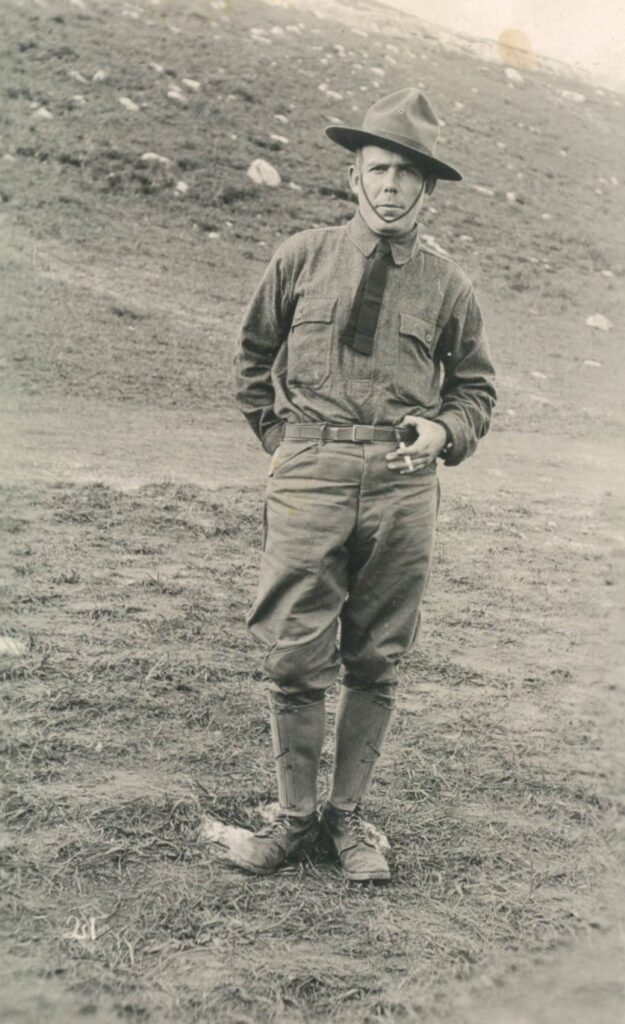
I want to share a poem with you that concerns the historic virus known as the Spanish Flu. My grandfather, Orion Wyant Swinehart (b. 1896-d. 1983), was in the thick of that virus. My poem parallels his life during that time with the events of the H1N1 virus history. The indented stanzas of my poem involve his life. The left-margined stanzas contain snippets of the national events from a century ago as well as current statistics. I list my resources after the poem.
I’ve been encouraged with some news reports providing survival statistics. I’m especially happy when good news reaches me about my friends, acquaintances, and family. Unfortunately, the bad news of the infection and mortality rates seem to outweigh those upbeat stories. While reviewing this history in my personal life and writing the following poem I became more hopeful for the future. Maybe this poem will encourage others to reach for endurance. Please be safe, healthy, and find your happiness.
The Great War and 1918 Influenza By Rose Klix April 6, 1917, hesitant President Wilson led U.S. into war. Fort Riley, Kansas, expanded into a staging location and combat training site for up to 50,000 men. May 1917, 21-year-old Orion, an only child, nicknamed Piggy, solely ranched 443 acres. His father Owen crippled his hand in a harvesting machine. A steady flow of flirty girls signed Piggy’s dance card. The country band rhythms hushed broadcasts about The Great War torturing nations across the ocean. June 5, 1917, his military registration card described Orion as "short, stout, blue eyes, brown hair, not bald" (yet). He proudly wrote, "Single, No dependents." His mother Minnie screeched, “Demand an exemption.” A registrar gritted his teeth. He scowled over his glasses and wrote, "Father’s hand - flimsy excuse". January 1918, Dr. Loring Miner warned a deadly viral strain struck down the most robust as if by a bullet. Public Health neglected to analyze his Kansas report. March 4, 1918, at Camp Funston, five miles from Fort Riley, a company cook from Haskell County reported feverishly sick. Fast as a haystack fire, 522 men also reported critically ill. August 26, 1918, the Army assigned Orion to induct troops at Fort Riley before deployment to war zones. Recruits arrived every 30 days to be "run through the mill". Second Wave, Fall 1918, a more virulent strain returned to the U.S. Safe-distance contact and closing of schools, public gatherings, and churches helped diminish the outbreaks to hundreds more deaths. November 11, 1918, Armistice Day, Orion couldn’t journey home yet. His tasks changed to processing GI discharges. January 16, 1919, Piggy’s homecoming day arrived. He boarded trains to reach the Elk Creek ranch and surprise his folks. His old collie Fanny leapt into his arms. In January 1919, a Third Wave added hundreds of thousands worldwide influenza deaths. H1N1 microscopic enemies inhabited the world until June 1919. January 31, 2021, Our infections totaled 26.2M with 441K deaths. Grandpa survived a century ago. Social-distancing, careful hygiene, and mask wearing may allow his descendants to endure more eras.
My Resources: In writing this poem I used a family story my mother repeated to me that my grandfather was sent home from the Army due to the Spanish Flu. I also learned more from reviewing his memoir My Life Story by O.W. Swinehart written in February 1973. It was included in my mother Evelyn Mae (Swinehart) Rose’s memoir In Retrospect A Family History printed in 2004. Her book is preserved by the Rapid City Genealogical Society and saved in the Genealogy section of the Rapid City Main Public Library, South Dakota. I located records of Grandpa’s WWI registration card and an index card from the U.S. Veterans Bureau confirming his service dates.
I also learned history about the H1N1 virus and certain events by researching the following online resources:
- CDC Disease Control Prevention article 1918 Pandemic Influenza: Three Waves
- Wikipedia articles titled: Haskell County, Kansas; Spanish Flu; Fort Riley (Kansas); and Funston, (Kansas)
- Kansas Historical Society articles Flu Epidemic of 1918 and Influenza Sign
- The New York Times Daily Change article as of Jan 31, 2021
Post and poem Copyright 2021 by Rose Klix